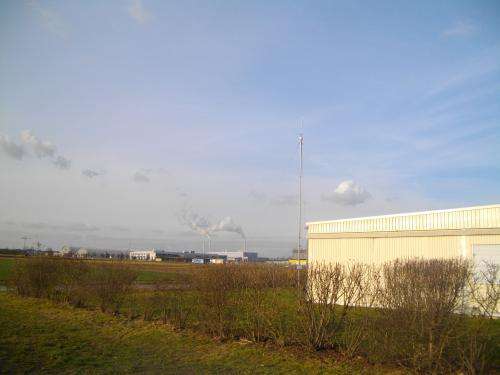Meteorological instruments for research and higher education

Climate prognoses for 100 years or weather forecasts for tomorrow: The more precisely and continuously data are measured, the better will the prognosis be. KIT runs a number of stationary and mobile measurement instruments for research and higher education. The weather station at Rheinstetten near Karlsruhe now celebrates an anniversary. For ten years, it has been supplying data to scientists worldwide.
"Just because the weather changes daily, we need continuous, long-term data measured by weather stations like that in Rheinstetten," Bernhard Mühr, meteorologist of KIT, explains. During the last ten years, the temperature measured at the station ranged from -19.3°C recorded at 7 a.m. on December 26, 2010 to 37.5°C at 2.35 p.m. on June 09, 2014. Average temperature over the ten years was 10.9°C. With an average of 12.3°C, the year 2014 was the warmest of the measurement series. Rheinstetten, hence, follows the global and German trends that also reveal that 2014 was a record year. "But although the Upper Rhine Valley appears to be a rather homogeneous area, wind, temperature, or precipitation measurements often differ unexpectedly. These findings can only be made with the help of a number of measurement stations."
The measurements at Rheinstetten are made on the glider airfield in cooperation with the local air sports club. The data measured there are directly used for the preparation and execution of flights. In parallel, a computer transmits the data to the recording system at KIT every ten minutes. There, the values are archived, processed graphically, and supplied on the internet. Researchers from all over the world, but also the interested public have direct access.
"Use of data measured by stationary and mobile instruments allows for the detailed analysis of the weather and for understanding the relationships determining local and regional climate," Christoph Kottmeier, Head of the KIT Institute of Meteorology and Climate Research (IMK), says. The observation system KITcube, for instance, monitors the atmosphere in a cube of ten kilometers edge length at high resolution. It is mobile and can be deployed all around the globe. The AEROTRAM system is installed on top of a tram and measures weather parameters and air quality in and around cities. Other measurement systems, such as weather radars and lidars, drop sondes or mobile measurement towers, are available. Data are also measured with the help of satellites or during aircraft-based measurement campaigns. Hence, the spectrum of measurement equipment of the IMK extends from highly local to supraregional systems.
Apart from the weather station at Rheinstetten, KIT also runs other stationary measurement stations in the area of Karlsruhe. On Campus North at Leopoldshafen, a measurement tower of 200 m height measures various meteorological parameters at various elevations. Other stations are located on the highest mountain of the northern Black Forest, Hornisgrinde, and in the city of Karlsruhe on Hertzstraße and Engesserstraße. All the data are used for both research and higher education. Presently, six weather stations are being operated in Israel and Jordan around the Dead Sea. The Institute of Meteorology and Climate Research uses latest measurement instruments, comprehensive measurement data, evaluation methods, and simulation models for environmental, climate, and energy research. Among the services offered by the Institute are the supply of own measurement data and the execution of complex measurement projects and model studies.
More information: Web page of the weather station at Rheinstetten: www.imk-tro.kit.edu/wetterstation/rheinstetten
Web page on measurement systems of IMK: www.imk-tro.kit.edu/4350.php
Provided by Karlsruhe Institute of Technology



















